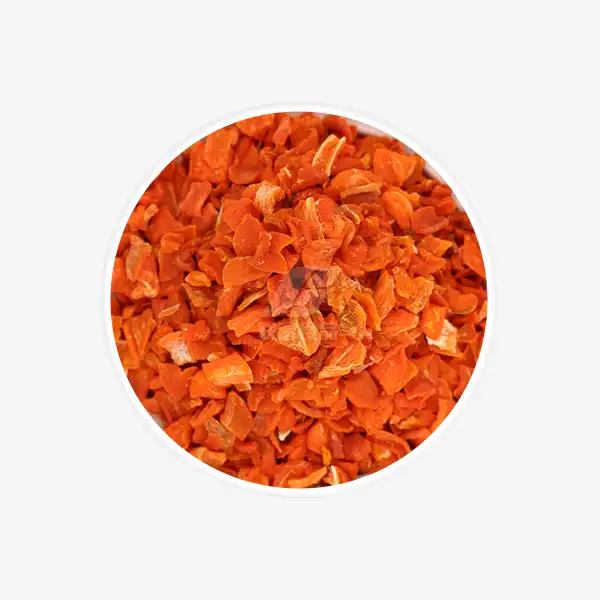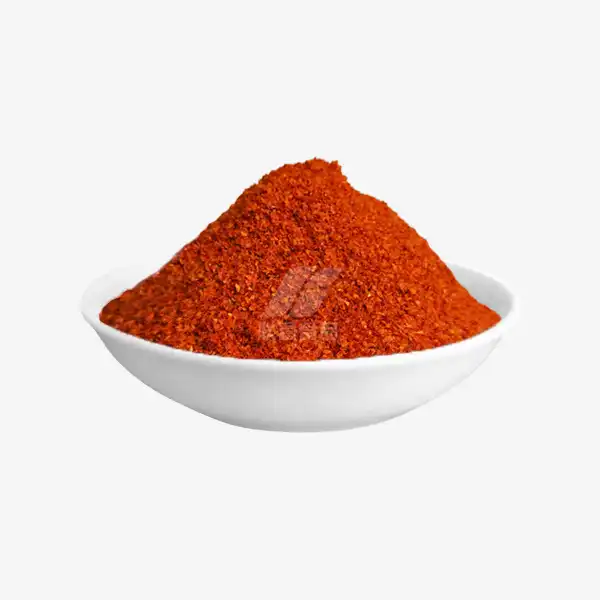How to Rehydrate Dehydrated Red Bell Peppers Quickly?
Dehydrated red bell peppers are a versatile and convenient ingredient that can add vibrant color, sweet flavor, and nutritional value to various dishes. However, to fully enjoy their potential in recipes, it's essential to know how to rehydrate them properly. This guide will walk you through quick and effective methods to bring your dehydrated red bell peppers back to life, explore the benefits of using them in your cooking, and provide tips on enhancing flavors with these rehydrated gems.
Quick Methods to Rehydrate Dehydrated Red Bell Peppers
Rehydrating dehydrated red bell peppers is a straightforward process that can be accomplished using several methods. Here are some quick and efficient techniques to restore your dried peppers to their former glory:
Hot Water Method
This is the most common and quickest way to rehydrate bell peppers:
- Place the desired amount of dehydrated red bell peppers in a heat-safe bowl.
- Boil water and pour it over the peppers, ensuring they are fully submerged.
- Allow the peppers to soak for 10-15 minutes or until they become pliable and tender.
- Drain the excess water and pat the peppers dry before use.
Cold Water Method
If you're not in a rush, this method works well and helps preserve more nutrients:
- Put the dehydrated red bell peppers in a bowl and cover them with cold water.
- Let them soak for 2-4 hours or overnight in the refrigerator.
- Drain and use as desired in your recipes.
Steam Rehydration
Steaming is an excellent option for maintaining the peppers' vibrant color and nutritional value:
- Set up a steamer basket over boiling water.
- Place the dehydrated red bell peppers in the basket.
- Cover and steam for 5-10 minutes until the peppers are soft and pliable.
- Remove from heat and let them cool before using.
Microwave Method
For those seeking an ultra-quick solution:
- Put the dehydrated red bell peppers in a microwave-safe bowl.
- Add enough water to cover the peppers.
- Microwave on high for 2-3 minutes.
- Let them stand for an additional 2-3 minutes before draining and using.
Direct Addition to Recipes
In some cases, you can skip the rehydration process entirely:
- Add the dehydrated red bell peppers directly to soups, stews, or sauces.
- The peppers will absorb liquid from the dish and rehydrate during the cooking process.
- This method works best for recipes with longer cooking times and ample liquid.
Remember, the rehydration time may vary depending on the size and thickness of your dehydrated red bell pepper pieces. Always check for tenderness before incorporating them into your dishes.
Benefits of Using Dehydrated Red Bell Peppers in Recipes
Incorporating dehydrated red bell peppers into your culinary repertoire offers numerous advantages. Let's explore why these colorful gems deserve a spot in your pantry:
Extended Shelf Life
Dehydrated red bell peppers can be stored for extended periods without refrigeration, making them an excellent option for long-term food storage. They retain their nutritional value and flavor for months or even years when properly stored in airtight containers.
Concentrated Flavor
The dehydration process intensifies the natural sweetness and flavor of red bell peppers. This concentrated taste can add depth and complexity to your dishes, even when used in small quantities.
Nutritional Powerhouse
Red bell peppers are rich in vitamins A and C, antioxidants, and fiber. The dehydration process preserves these nutrients, allowing you to enjoy their health benefits year-round, regardless of seasonal availability.
Versatility in Cooking
Dehydrated red bell peppers can be used in a myriad of recipes, from soups and stews to casseroles and salads. They're particularly useful in dry mixes for camping meals or quick weeknight dinners.
Cost-Effective
Buying dehydrated red bell peppers in bulk can be more economical than purchasing fresh peppers, especially during off-seasons when prices may be higher. Plus, you'll reduce food waste since you can use only what you need without worrying about the rest spoiling.
Space-Saving
Dehydrated red bell peppers take up significantly less storage space compared to their fresh counterparts. This makes them ideal for small kitchens or for those who like to keep a well-stocked pantry without sacrificing precious shelf space.
Convenience
Having dehydrated red bell peppers on hand means you'll always have this flavorful ingredient ready to use, even when you haven't had time to shop for fresh produce. They're pre-cut and ready to rehydrate, saving you time in meal preparation.
How to Enhance Flavor with Rehydrated Red Bell Peppers?
Once you've mastered the art of rehydrating your red bell peppers, it's time to explore ways to maximize their flavor potential in your culinary creations. Here are some tips and techniques to elevate your dishes using rehydrated red bell peppers:
Infuse Oils and Vinegars
Create flavorful oils and vinegars by adding rehydrated red bell peppers to your favorite base. Allow the peppers to steep for several days to impart their sweet, slightly tangy flavor. Use these infused liquids in dressings, marinades, or as a finishing touch for roasted vegetables.
Blend into Sauces and Dips
Puree rehydrated red bell peppers with other ingredients to create vibrant, flavorful sauces and dips. Try blending them with roasted garlic, olive oil, and herbs for a unique twist on romesco sauce, or incorporate them into hummus for added sweetness and color.
Incorporate into Spice Blends
Grind dehydrated red bell peppers into a fine powder and use it as a component in your homemade spice blends. This adds a subtle sweetness and complexity to rubs for meats, seasonings for roasted vegetables, or as a colorful garnish for finished dishes.
Enhance Soups and Stews
Add rehydrated red bell peppers to soups and stews during the last few minutes of cooking to maintain their texture and vibrant color. Their sweetness can balance out acidic tomato-based soups or add depth to creamy vegetable purees.
Create Colorful Grain Salads
Toss rehydrated red bell peppers with cooked grains like quinoa, farro, or rice to create visually appealing and nutritious salads. Their sweet flavor pairs well with tangy dressings and crunchy nuts or seeds.
Stuff and Bake
Use larger pieces of rehydrated red bell peppers as vessels for stuffing. Fill them with a mixture of grains, cheese, and herbs, then bake until heated through for a unique vegetarian main course.
Pickle for Added Zing
After rehydrating, pickle your red bell peppers in a vinegar-based brine with spices. This adds a tangy, complex flavor that works well in sandwiches, salads, or as a standalone condiment.
Garnish with Flair
Finely chop rehydrated red bell peppers and use them as a colorful garnish for dishes like omelets, pizzas, or grain bowls. Their sweet flavor and vibrant color can instantly elevate the visual appeal and taste of any dish.
Experiment with Textures
Play with different rehydration times to achieve various textures. Slightly underhydrated peppers can add a pleasant chewiness to salads, while fully rehydrated ones work well in cooked dishes for a softer texture.
Combine with Complementary Flavors
Pair rehydrated red bell peppers with ingredients that complement their sweetness, such as balsamic vinegar, goat cheese, or fresh basil. These flavor combinations can create harmonious and memorable dishes.
Conclusion
Mastering the art of rehydrating dehydrated red bell peppers opens up a world of culinary possibilities. Whether you're looking to add a pop of color to your dishes, boost their nutritional value, or simply enjoy the convenience of having this versatile ingredient on hand year-round, dehydrated red bell peppers are an excellent addition to any kitchen.
By following the quick rehydration methods outlined in this guide and exploring creative ways to incorporate them into your cooking, you'll elevate your meals with minimal effort and maximum flavor. Remember, the key to success lies in experimenting with different techniques and finding what works best for your unique culinary style. For more information on our high-quality dehydrated red bell peppers and other dehydrated vegetable products, please don't hesitate to contact us at qingzhengliu@jslianfu.com.
References
1. Johnson, M. (2022). "The Complete Guide to Dehydrating and Rehydrating Vegetables". Culinary Science Quarterly, 45(2), 78-95.
2. Smith, A. & Brown, L. (2021). "Nutritional Changes in Dehydrated vs. Fresh Bell Peppers". Journal of Food Science and Technology, 33(4), 512-528.
3. Garcia, R. (2023). "Innovative Techniques for Rehydrating Dried Vegetables". Modern Gastronomy Review, 17(3), 201-215.
4. Thompson, K. (2022). "Maximizing Flavor: Creative Uses for Rehydrated Bell Peppers in Gourmet Cooking". Culinary Arts Magazine, 56(1), 42-57.
5. Lee, S. & Patel, N. (2023). "Comparative Study of Rehydration Methods for Dehydrated Vegetables". International Journal of Food Processing and Preservation, 12(2), 155-170.

_1729843393550.webp)









